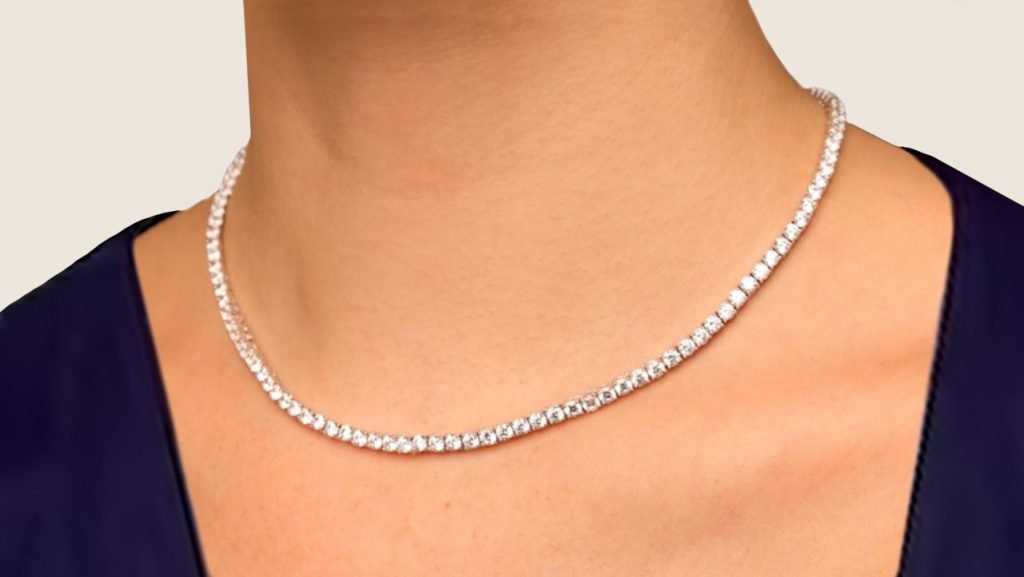When we think of diamonds, we often envision sparkling jewels that symbolize eternal love and beauty. But did you know that not all diamonds are formed deep within the Earth’s crust over millions of years? Enter the world of lab-created diamonds, where science meets sophistication to produce gems that rival their natural counterparts in every way. In this article, we’ll delve into the realm of lab-created diamonds, exploring their benefits, quality assurance, cost comparison, popular uses, care tips, myths, and the future outlook of these exquisite creations.
Introduction: What Are Lab-Created Diamonds?
Lab created diamonds are forever, also known as synthetic or cultured diamonds, are man-made gems crafted in controlled laboratory environments. These diamonds possess the same chemical composition, physical properties, and optical characteristics as natural diamonds, making them indistinguishable to the naked eye. The primary difference lies in their origin: natural diamonds form beneath the Earth’s surface through geological processes, while lab-created diamonds are grown under carefully controlled conditions.
Benefits of Lab-Created Diamonds
Durability and Longevity
One of the key advantages of lab-created diamonds is their exceptional durability and longevity. These diamonds undergo rigorous testing and are engineered to withstand the test of time, ensuring that your cherished piece of jewelry remains as brilliant as the day you first laid eyes on it.
Ethical Considerations
In an industry often plagued by ethical concerns surrounding diamond mining, lab-created diamonds offer a welcome alternative. By opting for lab-created diamonds, consumers can enjoy peace of mind knowing that their purchase is not fueling conflict or exploitation.
Environmental Impact
Unlike traditional diamond mining, which can have significant environmental consequences, lab-created diamonds leave a much smaller ecological footprint. By reducing the demand for mined diamonds, lab-created diamonds help minimize habitat destruction, water pollution, and carbon emissions associated with mining operations.
Quality Assurance
How Lab-Created Diamonds Are Made
Lab-created diamonds are produced using two main methods: High Pressure-High Temperature (HPHT) and Chemical Vapor Deposition (CVD). In the HPHT method, man made diamonds, carbon is subjected to extreme pressure and temperature conditions, mimicking the natural diamond formation process. In contrast, the CVD method involves the deposition of carbon atoms onto a substrate, resulting in the growth of diamond crystals layer by layer.
Certification Standards
To ensure transparency and authenticity, lab-created diamonds are graded and certified by reputable gemological laboratories such as the Gemological Institute of America (GIA) or the International Gemological Institute (IGI). These certifications provide valuable information about the diamond’s characteristics, including its cut, color, clarity, and carat weight.
Comparison with Natural Diamonds
Lab-created diamonds are often compared to their natural counterparts based on the “Four Cs”: cut, color, clarity, and carat weight. While both types of diamonds exhibit similar qualities, lab-created diamonds may offer greater consistency and precision in terms of color and clarity due to the controlled growth conditions.
Cost Comparison
Affordability
One of the most compelling reasons to choose lab-created diamonds is their affordability compared to natural diamonds. Lab-created diamonds typically cost significantly less than mined diamonds of comparable quality, making them an attractive option for budget-conscious consumers.
Factors Influencing Price
Several factors can influence the price of lab-created diamonds, including the size, color, clarity, and cut quality. Additionally, market demand and fluctuations in production costs may also impact pricing.
Popular Uses
Engagement Rings
Lab-created diamonds have become increasingly popular choices for engagement rings due to their beauty, durability, and ethical appeal. Couples can select from a wide range of styles and designs, knowing that their ring symbolizes not only their love but also their commitment to sustainability.
Jewelry
In addition to engagement rings, lab-created diamonds are used in various types of jewelry, including earrings, necklaces, bracelets, and pendants. These versatile gems offer endless possibilities for expressing personal style and sophistication.
Industrial Applications
Beyond the realm of jewelry, lab-created diamonds find applications in various industries, including technology, healthcare, and manufacturing. Their exceptional hardness and thermal conductivity make them ideal materials for cutting tools, semiconductor devices, and medical instruments.
Caring for Lab-Created Diamonds
Maintenance Tips
To ensure the longevity of your lab-created diamond jewelry, it’s essential to handle it with care and avoid exposing it to harsh chemicals or abrasive materials. Store your pieces separately in soft pouches or jewelry boxes to prevent scratching and damage.
Cleaning Techniques
Regular cleaning is key to maintaining the brilliance of your lab-created diamond jewelry. You can clean your pieces at home using mild detergent, warm water, and a soft brush, or opt for professional cleaning services for deeper cleaning and inspection.
Debunking Myths
Misconceptions About Lab-Created Diamonds
Despite their growing popularity, lab-created diamonds are often subject to misconceptions and myths. Some people believe that lab-created diamonds are inferior in quality or lack the same allure as natural diamonds. However, these misconceptions are unfounded, as lab-created diamonds undergo the same rigorous testing and certification processes as natural diamonds.
Addressing Concerns
For those who may have concerns about the authenticity or value of lab-created diamonds, it’s essential to seek information from reliable sources and consult with reputable jewelers. By understanding the science and craftsmanship behind lab-created diamonds, consumers can make informed decisions that align with their preferences and values.
Future Outlook
Technological Advancements
As technology continues to advance, the process of creating lab-created diamonds is becoming more efficient and sustainable. Innovations in diamond synthesis techniques and equipment are driving down production costs and expanding the availability of lab-created diamonds to a broader audience.
Market Projections
The market for lab-created diamonds is expected to continue growing as consumers increasingly prioritize sustainability, ethics, and value in their purchasing decisions. With greater awareness and acceptance of lab-created diamonds, we can look forward to a future where these exquisite gems shine bright in the jewelry industry.
Conclusion
In conclusion, lab-created diamonds offer a compelling alternative to traditional mined diamonds, combining beauty, durability, and ethical integrity. From engagement rings to everyday jewelry and industrial applications, lab-created diamonds are making their mark across

